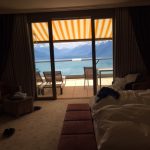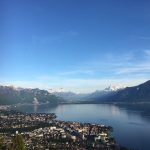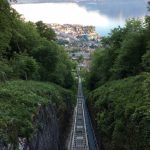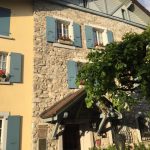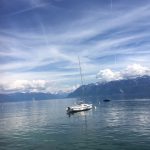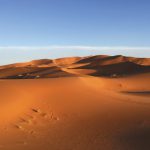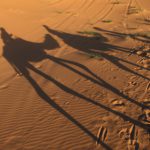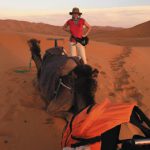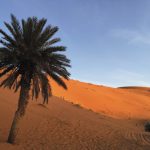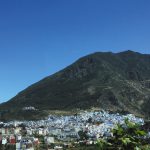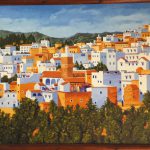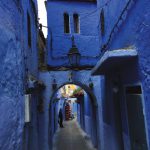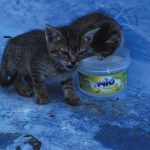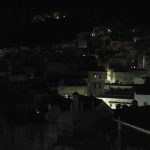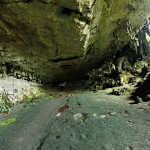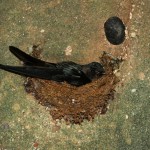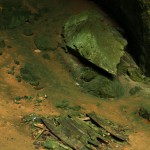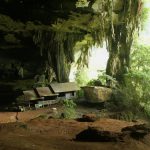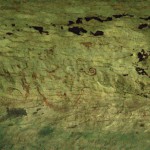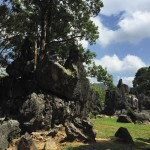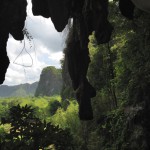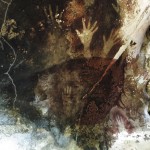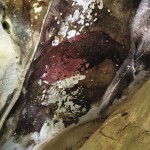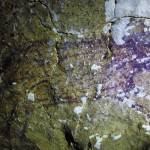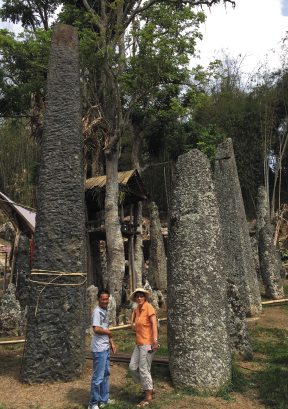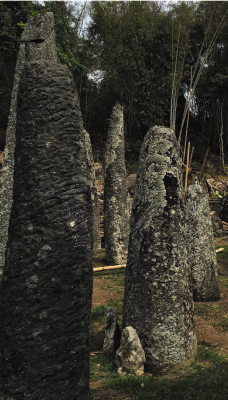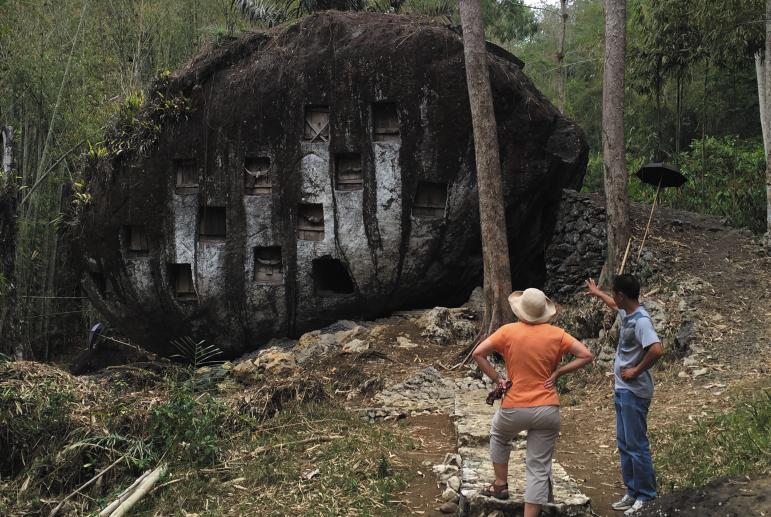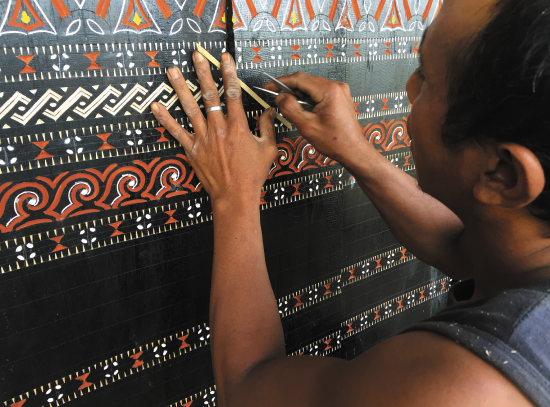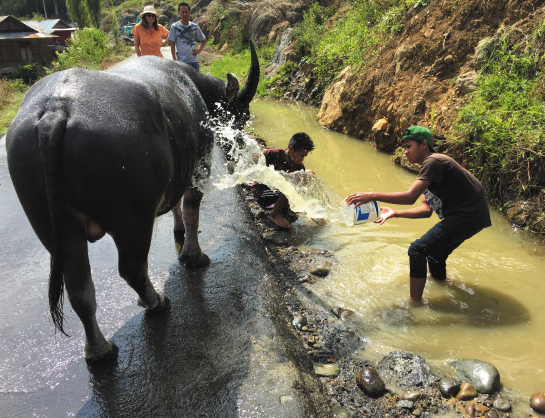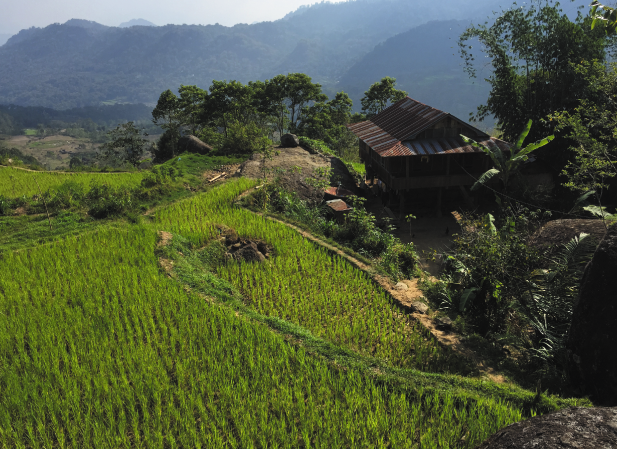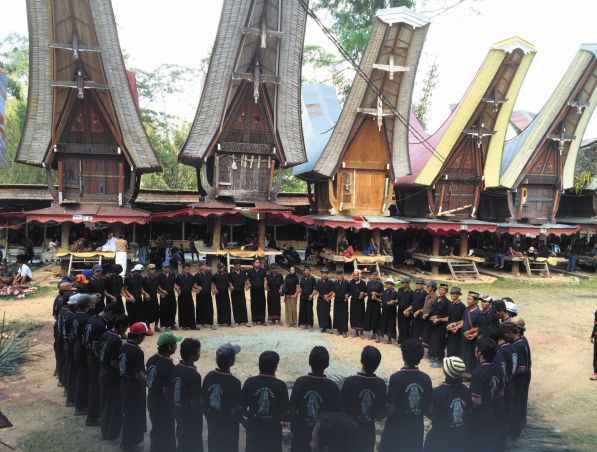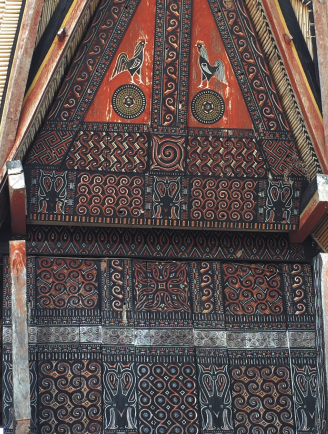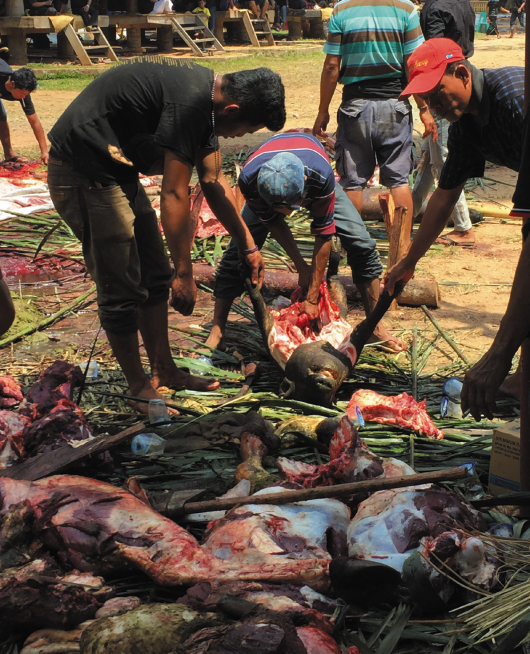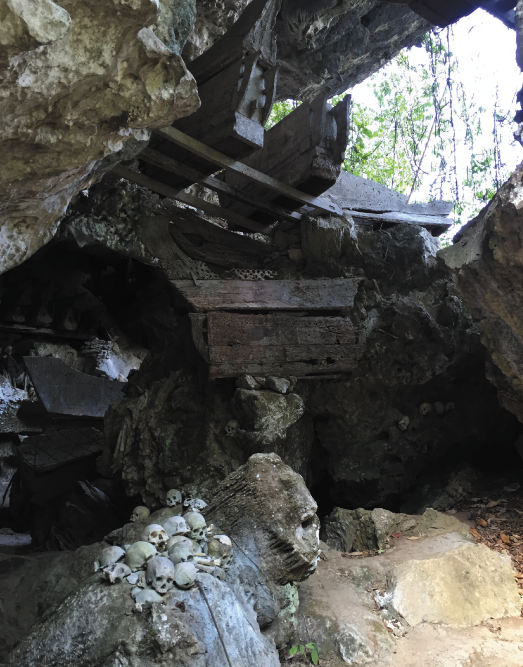From our miserable hotel to the Makassar airport is supposed to be just about 5-6 hours. Since nothing keeps us here, not even „a breakfast“ we use the calling for early morning prayer of the neighboring mosque to get up. Just taking a shower, throwing our stuff in the duffle bags, and by 6am we are on the road again. Not so much that we are looking for extending stay at the airport.
We want to stop on our way in a place you probably never heard of, and probably you never will, BUT if you ever heard of beautiful rock paintings of Altamira or Lascaux you may want to read this. Barely an hour from Makassar Airport we turn right into a flat valley full of green rice fields where today people works their land to make living. All surrounded by limestone towers. Safely hidden behind the wall of disinterested locals are few caves. In 1950 a Dutch couple discovered in them paintings of wild pigs and human stencils. How old they were? Nobody dared to estimate more than 10,000 years because nobody expected paintings could survive this climate in very shallow caves! OK, but even if they are just 10,000 years old we still HAVE to see them! And we did. They are truly amazing!
You bet they were worthy of any minute we spent there instead of waiting for our flights in the Makassar. They were late anyway!!! What we have to know now how really old are they? Let us go back to the Dutch couple (Mr. van Heekeren and Miss van Heeren for the record) doing their pioneering work. They did not have tools we do have today and guessing from historical records of male professors doing their field work while being supported by a young attractive female assistant full of admiration they might have other vested interests than guessing how old is the pig in the cave! But if other scientists would not question the judgment of this remote couple, I definitely WOULD and thanks God there were others. Not just me!
Today we we know that the paintings of pigs or whatever animals are depicted here were made with the natural mineral pigment ochre – probably ironstone haematite – which the hunter-gatherers ground to a powder and mixed with water or other liquids to create paint. Maroon red dye is almost impossible to erase. Damn it, can you imagine somebody doing that today? Probably not. What about 10,000 years ago? Are you crazy? But as I wrote above, never trust anybody, and as my wife keep saying „Especially not a married man!“ as Mr. Van Heekeren was. 60 years or so later, finally a co-ed team (here we go again!) of scientists did what should have been done long time ago. And results? Absolutely stunning!!! Fresh analysis of the pictures by this team shocked researchers by dating one hand marking to be at least 39,999 years old (those guys must be good in shoe pricing as well), and two paintings of animals, a pig-deer or babirusa (sorry, never heard of and corroborate on it), and another animal, probably a wild pig, to at least 35,400 and 35,700 years ago respectively!!!! If this is true, we have two groups of artists (one in Western Europe and another group in Sulawesi, roughly 7 time zones apart) INDEPENDENTLY on each other producing art on the level superior to what we can see today in Galleries of Contemporary Art around California! It means our descendants were artists BEFORE they left Africa. They were not just dumb bi-pedals picking up insects, nuts and bottom of the food chain garbage. And waiting for the Big Bang of their artistic skills only after reaching today France. And its art and creativity stimulating wine! They were artists before they crossed Deserts of Sinai! Or Red Sea, sorry Mr.Ten Amendments!
This is absolutely revolutionary! But before you throw your support behind this theory I would caution you as our experience with many similar theories keeps teaching us so far. Remember butter/margarine story! Or another one, this is my personal one. A theory that my famous countrymen, a musician, a traveler, a philosopher, a true renaissance man (his name was Jára da Cimrman) was involved in the Ferdinand de Lessepse infamous first attempt to dig a ditch later called Da Panama Canal. This theory came to a sudden collapse after Jára’s pair of rubber boots was discovered in the roof storage area of his birth place cabin in the small mountain village of Bohemia. After Czech Academy of Sciences special lab did carbon testing of the cow shit found in his rubber boot soles it was confirmed that this material originated somewhere in Americas on or about August 6, 1902 plus minus 200 YEARS! Not really a proof the theory supporters were looking for.
So be patient, my dear girls. You may be among the first people to see on those photos of mine the oldest art in the history of human mankind. But we may need more than what is scientifically proven so far. No matter how encouraging it may look!


















